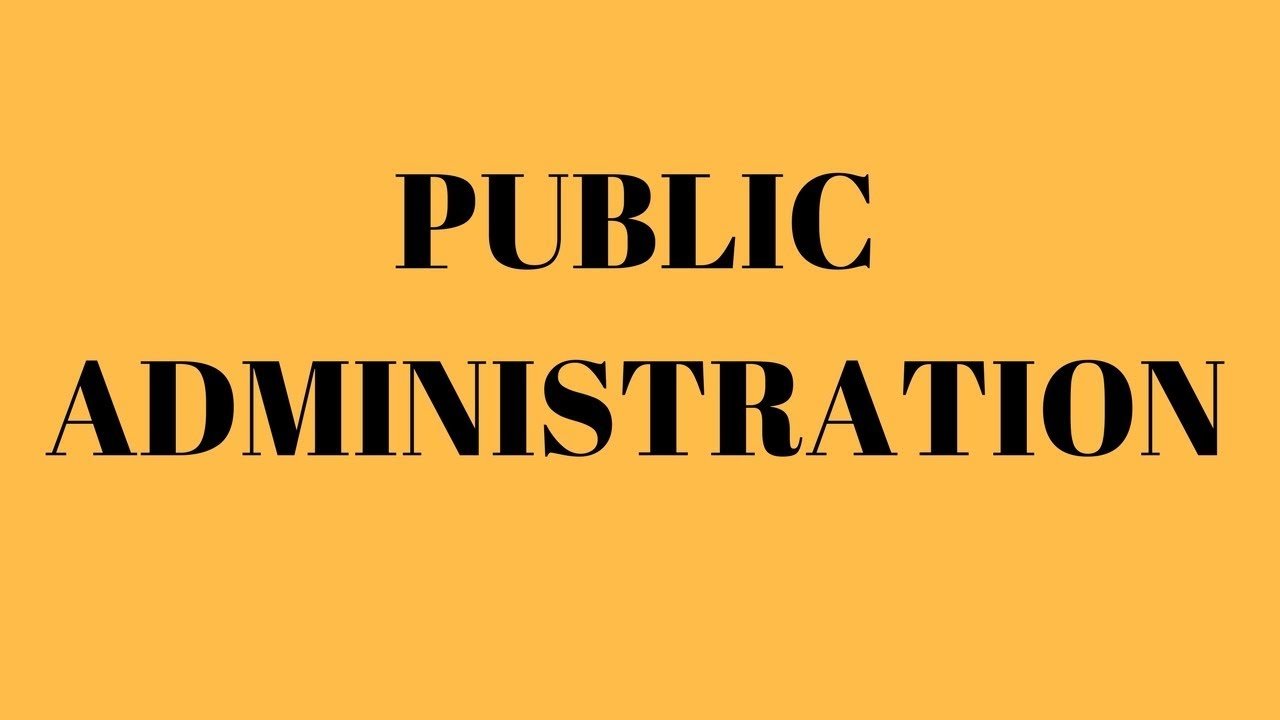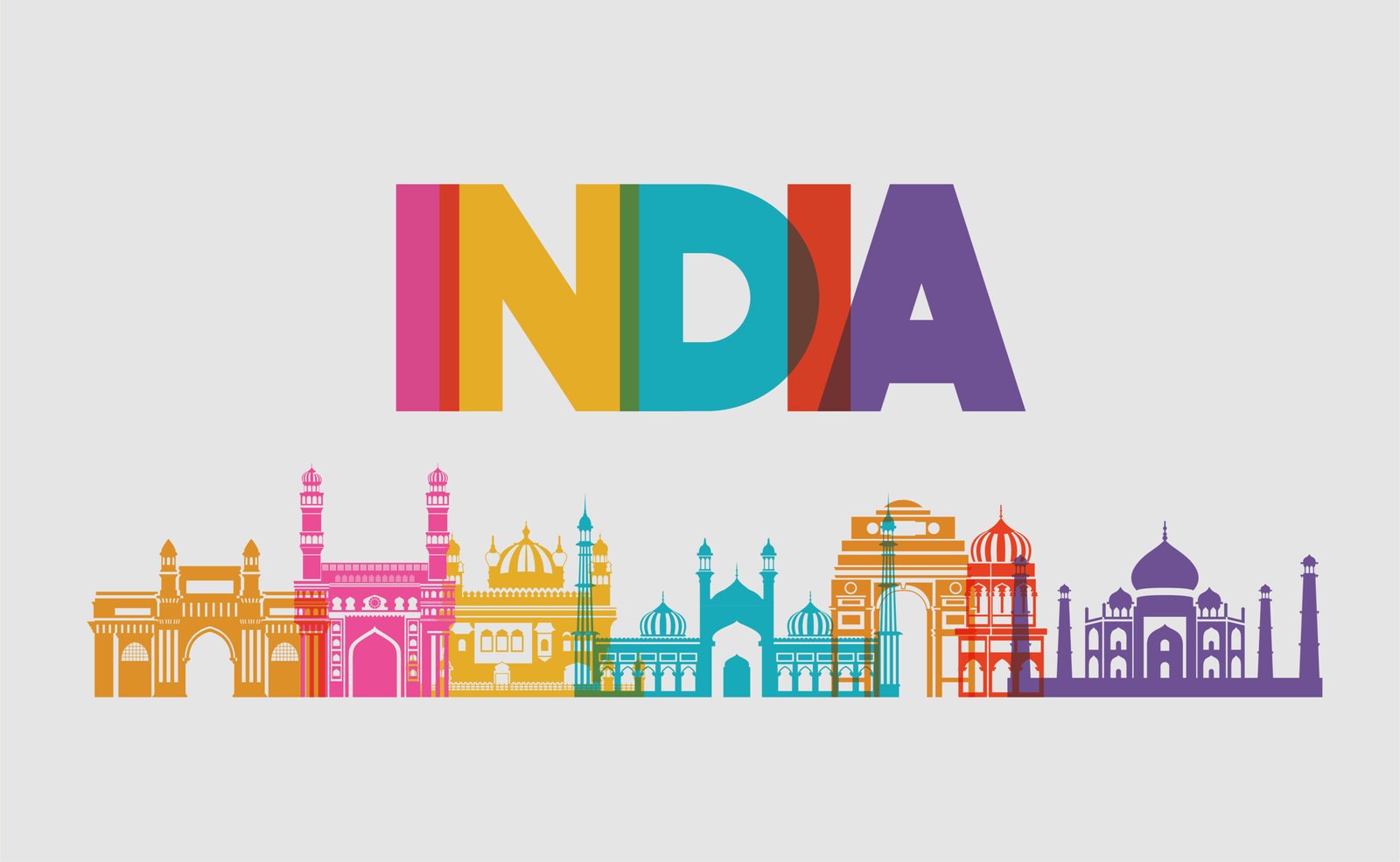Meaning, Scope and Significance
of Public Administration
What is meant by Public Administration? How have various scholars defined it?
Ans. Administration has been a part of the human culture since a century. Prior to that, it was more
about ‘who rules the populace’ rather than ‘how it was to be done’. Administration is a combination of
two words, ‘ad’ and ‘ministaire’ meaning to ‘serve’. In crude terms, Public Administration is ‘to serve’
the people by the State that is ruling or as it is today, the government in power. All the government’s
activities need to be carried out in a planned way so that the teeming millions are not left high and dry
in an anarchic state. The government in power is a subject of polity with reference to how it is elected
but what and how it gets things done after coming into power is Public Administration. So, it involves
implementation of public policy by the executive branch of a government caters to the needs of the
citizens.
The State is a recent phenomenon. We have some evidence of the system of the republic in
Rome where it was established. Greece supported democracy whereas India has the rich heritage
of Kautilya’s ‘Arthashastra’ in which guidelines were provided for a king on ‘how to rule’ but the
ancient period was consistently riddled with conspiracies and wars to win the lands and increase
territories. Public interest and public good were the least of their worries. The present-day govern-
ments have the responsibility to deliver public goods effectively and efficiently for the benefit of
the public. To accomplish this, a new study began and scholars began theorizing about it. Defining
Public Administration is the first step to begin the study so that a basic understanding can be achieved.
Various scholars have defined Public Administration with essentially the same meaning. The defini- tion of Public Administration as provided by eminent thinkers is given in the following section, along with brief explanations were necessary.
Karl Marx
‘Administration is a determined action taken in pursuit of a conscious purpose. It is the systematic ordering of affairs
and the calculated use of resources aimed at making those things happen which one wants to happen’.
Marx implied that administration does not and cannot happen on its own. It is a deliberate effort
with a goal in mind. Secondly, it cannot be an unplanned effort and should be carried on in a systematic
planned, sequential way with a judicious utilization of available resources.
W. F. Willoughby
‘Administration of a government exactly parallels the management of organizational affairs in any sphere and has
efficiency as its primary concern’. He gave five principles of administration which are:
• General or overhead administration: planning, coordination, commanding, etc.
• Organizational structure: study of the design of the organization, such as, hierarchy, scalar chain, etc.
• Personnel Administration: recruitment, training, promotion, etc.
• Financial Administration: economic use of financial resources.
• Materials and supply: materials management.
Willoughby’s definition is a comprehensive one and covers almost all aspects of the administration that were prevalent in those times according to the nature and scope of the activities of the government.
J. M. Pfiffner
‘Administration is the organization and direction of human and material resources to achieve desired ends’.
This definition depicts administration as an instrument using physical and human resources to attain the identified goals. So, it becomes a cooperative effort to work for common objectives. He lays stress on the coordinating role of administration.
L. D. White
‘Public Administration comprises all those operations that have for their purpose the fulfilment or enforcement of
public policy’.
The above definition simply equates Public Administration with the implementation of public policy.
Woodrow Wilson
‘Public Administration is a detailed and systematic application of law’.
This is a very simplistic view of Public Administration though he has written in detail about it in his book.
Marshall E. Dimock
‘Public Administration is the fulfilment or enforcement of public policy as declared by the competent authorities.
… Public Administration is law in action. It is the executive side of government’.
This definition portrays Public Administration as the implementation of public policy and law by theexecutive government.
Herbert A. Simon
‘The scope of Public Administration deals with the activities of the executive or administrative branch only’.
E. N. Gladden
‘Public Administration is concerned with the administration of the government’.
Dwight Waldo
‘Public Administration is the art and science of management applied to the affairs of the state.’
Here, a reference is made to Public Administration being an art as well as a science applied in the
state’s affairs. Public Administration is considered as an art as it is a sphere of intellectual research, a dis-
cipline for study and administration of public affairs in a sequence of operations. It is an art of carrying
out activities. On the other hand, it is on the way to become a science as a cause and effect of decisions can
be determined and analysed.
Luther Gulick
‘Public Administration is that part of administration which has to do with the government and this concerns itself
primarily with the executive branch, where the work of the government is done, though there are obviously adminis-
trative problems also in connection with the legislative and judicial branches’.
This definition talks about the Public Administration being a science and ropes in all the three branches
of the government.
Frederick Camp ‘Fritz’ Mosher
‘….Any definition of this field (Public Administration) would be either so encompassing as to call forth the
wrath or ridicule of others or so limiting as to stultify its own disciples….’. Perhaps it is best that it not be
defined. It is more an area of interest than a discipline, more a focus than a separate subject, it is necessarily
cross-disciplinary.
Mosher rightly professed that Public Administration is both, an activity and a discipline. Since its
activities are all pervading and inter-disciplinary, there arises an identity crisis, thus becoming the ridicule
of theirs.
Felix A. Nigro and Lloyd G. Nigro
They defined Public Administration focussing the following aspects:
• A cooperative group effort in a public setting
• Covers all three branches—executive, legislative and judiciary—and their interrelationships.
• Has an important role in the formulation of public policy and is thus a part of the political process.
• Is more important than, and is also different in significant ways from private administration.
• As a field of study and practice has been much influenced in recent years by the human relations
approach.
• Is closely associated with numerous private groups and individuals in providing services to the
community.
Probably, Nigro’s definition is the most comprehensive one that covers almost all aspects of administration.
UNITED NATIONS DEVELOPMENT PROGRAMME
According to the UNDP, Public Administration has two closely related concepts:
• The aggregate machinery (policies, rules, procedures, systems, organizational structures, personnel
and so forth) funded by the state budget and in-charge of the management and the direction of the
affairs of executive government and its interaction with other stakeholders in the state, society and
external environment.
• The management and implementation of the whole set of government activities dealing with the
implementation of laws, regulations and decisions of the government and the management related
to the provision of public services.
• This definition of Public Administration was given by UNDP in 2003 which is probably the reason
why it is such a comprehensive one. It talks about almost all the areas of Public Administration.
From all the above definitions, it can be summarized that Public Administration is about the process of
public policies from formulation to implementation[1].
Q2 Write a short note on the views held about Public Administration with respect to
the nature of the discipline.
Ans. The activities and scope of Public Administration is changing drastically with time and the defini-
tions cannot sustain for long. Yet it is true that the definitions of Public Administration lead to the emer-
gence of two views regarding the nature of Public Administration, one being the integral view and the
other the managerial view. Given below are both the views in brief:
The Integral View
The ‘Integral View’, as given by L.D. White, holds Public Administration as the, ‘the sum total of all the
activities undertaken in pursuit of fulfilment of policy.’ These activities include managerial, technical,
manual and the clerical activities undertaken to achieve the objective. The nature literally means the
essential qualities or characteristics by which something is recognized. The nature of Public Administra-
tion entails:
• Each official working in the organization from top-down comprises Public Administration.
• Activities undertaken may have a varying degree of importance in the larger picture of the admin-
istrative set-up.
• Administration would vary from one area to another which is contingent upon the issues and the
organization.
Fayol also prescribes to this view opening that ‘every employee in an undertaking—workman, shop-manager,
head of division, head of department and manager’. If it is a state enterprise, the series extends to the
Minister or the Head of the state takes a larger or smaller share in the work of administration. He includes
every individual responsible of doing something in an organization in administration. The ‘how’ is the
management techniques and principles that will be employed to do administrative tasks under consid-
eration. Scholars like L. D. White, Marshall Dimock and Henri Fayol, Woodrow Wilson, F. A. Nigro and
Pfiffner prescribed to this view. They called it the ‘wider view’ which comprises the three branches of the
government, that is, the executive, the legislative and the judiciary. Dimock states that the issues deal with
the ‘what’ and ‘how’ of a government. The ‘what’ being the subject matter and the technical knowhow to
enable the administrating official to carry out his activities.
Managerial View
As the name suggests, this view proposes that Public Administration deals with the work of those indi-
viduals who are engaged in the managerial functions in an organization. Such officials are responsible for
planning, programming and organizing all the operational activities to accomplish the identified goals.
The major supporters of this view are Simon, Smithburg, Thompson, Gulick, etc. Some important consid-
erations of this view are:
• Individuals responsible to run an enterprise efficiently are the main doers of administration.
• The activities carried out by these individuals make it a coordinated effort.
• According to Gulick, ‘Administration has to do with getting things done with the accomplishment
of defined objectives.’
Gulick and Urwick provided the concept of POSDCORB—Planning, Organization, Staffing, Directing,
Coordinating, Reporting and Budgeting.
Both the views, integral and managerial, differ in their approach. Dimock and Koenig stated that
Public Administration, as a study, basically involves all aspects of a government’s intentions to implement
laws to bring public policy to the ground zero. On the other hand, Public Administration as a process
comprises all the phases beginning from the enforcing agency demarcating and implementing the public
policies in jurisdiction along with the other agencies particular to complete the process. However, the
integral view would be more suited to India as the administration is quite traditional and all actions and
plans are formulated at the top and the clerk also does the same.
Q3 ‘The scope of Public Administration is ever expanding’. Comment.
Ans. Public Administration is a tool of the government to carry out all its activities, hence its scope is the
government’s activity. While studying the scope of Public Administration, it is implied that we are deal-
ing with the most relevant of its operations as an activity as well as a discipline. As is the case of various
views on what Public Administration is, so is the case while putting down on paper its scope. There are
different views on this issue but the common keywords that arise are government and public policy. We
can study the division of the activities of the government into five areas as given by Willoughby—general
administration, organization, personnel, material and finance. With recent developments in globalization,
privatization and liberalization, it can be said that privatization holds the upper hand while deciding
on the scope of Public Administration. The evaluation of Public Administration from state activity to
what it is today is a state of neo-development. Waldo’s words that Public Administration is dynamic and
ever-changing are true.
Even though there are varying views on what the scope of Public Administration is, an effort will be
made here to mention all the views:
• The Traditional View: The scholars supporting this view refer to only the executive branch. The
involved activities here were organization, personnel and procedures in any governmental activity to
execute public policies. This view did not hold strong in the light of other views with respect to scope.
• The Modern View: Thinkers of Public Administration held that a modern state had to undertake
various types of activities and that the scope of Public Administration comprises all activities of the
government in the field of public goods and services, defence, law and order, accountability and
transparency and in public sector undertakings.
Public Administration as a Discipline: Public Administration developed as an individual discipline in
the twentieth century when the political leaders and scholars began realizing its importance. The major
contributor of this view was Luther Gulick who provided the concept of POSDCORB. It is explained here in Fig.1.1.
• Planning: In the acronym ‘POSDCORB’, ‘P’ stands for planning. The government has to plan
beforehand which activities it has to carry out in any program or project to accomplish the identi- fied goals.
• Organization: The second alphabet, ‘O’ refers to organization which implies that in any given orga-
nization, there has to be a formal flow of authority through which work can be categorized and delegated.
• Staffing: The term ‘staffing’ has evolved and is now called ‘Human Resource Development’. It deals
with the whole process of personnel administration beginning from recruitment, training, wages and salaries and moving on to working conditions and motivation, etc.
• Directing: The fourth element is directing which deals with program formulation and leadership
dynamics. The administration has to make sound decisions to give out orders and directions to move an organization into the desired direction.
• Coordinating: There are various branches or division in an organization which work for the same
goal but if they do not unite for it, the output and performance will be adversely affected. So, this step relates to the interrelation among all the divisions of an organization.
• Reporting: ‘R’ stands for reporting of work done during an identified period of time. It involves
informing the officials at a higher hierarchical level about the activities and proceedings going on in an organization.
• Budgeting: The last alphabet stands for budgeting of an organization. No government activity can
be carried out without financial resources. So, proper budgeting procedure needs to be followed to have increased effectiveness.
POSDCORB in a nutshell, promotes unity, certainty and predictability to Public Administration. It provides
an instrumentality that combines interrelated interacting elements to work as a coherent entity. However,
it is criticized on grounds that the POSDCORB techniques cannot form the scope of Public Administration.
Public policy field has been neglected totally in its techniques. Thinkers like Robert Dahl, Dwight Waldo
and Herbert A. Simon perceived flaws in POSDCORB stating that for every principle of Gulick and Urwick,
there is another principle that contradicts it. It oversimplifies administration and challenged unity of com-
mand explaining that sometimes more than one boss is required to give orders and directions.
The human relations school pulled apart the concept of POSDCORB on grounds that it ignored the com-
petitive nature of needs, desires and wants of human beings.
The Subject Matter or the Substantive View: Since the POSDCORB view does not hold good as explained
above, there emerged the substantive view highlighting the ‘element of subject matter’, that is, the ser-
vices rendered and performed by the administrative agencies like that of defence, law and order, etc.,
must be considered. The areas on which these techniques can be applied are:
• Organizational Theory and Behaviour
• Public Personnel Administration
• Public Financial Administration
• Comparative and Development Administration
• Public Policy Analysis
L. D. White also supported this view taking the broader view covering the subject. To sum up, the modern
state needs to combine all these views and keep up with the dynamically changing needs globally. The
scope of the Public Administration keeps changing and expanding with times.
Q4 Since the time governments came into existence, Public Administration has been
a part of it. Discuss the significance of the discipline with special reference to modern day democracies.
Ans. Public Administration is a tool to deliver goods and services to people. Its whole purpose revolves
around this function, that is, ‘to serve’. The effort is to improve all the fields whether it is defence, law
and order, health and sanitation. Public Administration, as a social service, does not mean the absence of
authority or power, for example, there is an essential need to have economic control mechanisms to have a
balanced economic growth or a strong police force to maintain law and order. It is the right amalgamation
of power and the consciousness of duties and responsibilities. Public Administration as a ‘discipline’ has
been evolving to invent methods and techniques to achieve an increase in the 3 ‘Es’ of Efficiency, Economy and Effectiveness.
The significance of Public Administration, cannot be underestimated. Given below are the relevant
areas of the importance of Public Administration:
• A Governance Tool: Public Administration is first and foremost, a governance tool, in modern
day democracies, as this is the period we are living in. Building a tool on the past experiences and
theory is important but to apply it in the present context is even more important. The government
activities have increased manifold with public interest as its motive. Government is a necessary evil
in the face of globalization, privatization and liberalization with respect to the regulatory factor in
its execution, for example, in dealing with economy, terrorism, food and agriculture, control of cor-
ruption, etc. The worldwide indicators of governance are vote and accountability, political stability
and absence of violence, government effectiveness, regulatory quality, rule of law and control of corruption, which are extremely important to have a prosperous society.
• A Tool for Development: Economic, social and cultural growth is not possible without paying
attention to Development Administration. Growing multinational corporations as a consequence of
globalization require Public Administration to play an important proactive role. Historically, Public
Administration has been a tremendous tool for development administration. There is evidence that
the Roman Republic indulged in a lot of public activities and gave special encouragement to the
systems of administration, law and legislative democracy. Such activities can be termed as develop-
mental as they add to the betterment and upliftment of the society. There has been a detailed study
by Greek scholars, Aristotle and Plato, to study the ideal state and society to have good governance.
Herodotus, also a Greek scholar, researched a lot about comparative Public Administration. Devel-
opment administration is considered important with respect to the growth of methodologies to
execute public policies though it was a part of Comparative Public Administration. Development
administration deals with the administrative capacity building in the fields of personnel, finance,
accounting, etc. to conduct social activities. It focuses on the developmental activities of the Gov-
ernment. India has seen growth of development administration via Planning Commission through
Five Year Plans and now via NITI Aayog which aims at developing the nation at the grassroots
level.
• Public Administration in a Welfare State: The concept of a welfare state gained momentum
after the fall of colonialism and the growth of sovereignty in the Post World War period. Prior
to the World Wars, the nation state concentrated only on the enhancement of their boundaries
and how to win wars. To do that, it had to reinforce its police and army strength. After the Wars
arose the welfare state that took up the duties and responsibilities to cater to the welfare of
the people. Physical as well as social infrastructure needs to be provided to the citizens by the
Government.
The developing nations are facing a plethora of problems in commerce, road and transport, seaworthy
fleets, defence, education, health, social security, employment, senior citizens, old age pensions, etc. Pub-
lic Administration helps in providing services in all these areas to look after its citizens. It makes schemes
and projects so that there is an overall development of a nation. The welfare state is also called by some as
an ‘administrative state’. Public Administration is all pervading and found in almost every activity of the
government right from the policy formulation, planning projects and schemes, carrying them out, after
the required funds have been appropriated by the legislative bodies with proper monitoring and supervi-
sion to ensure that the allocated funds were used properly for what they were meant for according to the
predetermined standards and quality.
Q5 Privatization is more conducive to an increase in performance as compared to
public sector undertakings. Comment.
OR
‘The field of Public Administration is a field of business’ —Woodrow Wilson. Comment.
Ans. Before studying and analyzing the statement, a brief mention is necessary about the basic
difference between public and private administration. Paul H. Appleby gave three theoretically
strong differences with respect to the difference between public and private administration on
political characteristic, breadth and scope and public accountability. The best outlay of the differ- ences has probably been given by Herbert A. Simon. He termed the public and private administra-
tion as governmental and non-governmental administration. Given below are the differences given y Herbert A. Simon in brief:
On the other hand, there are also some similarities in the two areas which are given below:
• Public Administration and private administration are both based on law. The public organization has the constitutional mandate and a private organization is established under a legal charter.
• The officers in both the organizations have to work within the law.
The 1970s saw a sharp increase in research and study as it was observed that state-led development was
riddled with inefficiency and corruption. Scholars came out with studies such as Public Choice Theory,
New Public Management and Neo-Liberalism to promote privatization for better performance. They sug- gested downsizing of government intervention in the market economy leading to the disinvestment in non-performing PSUs to stop losses.
The PSUs in India grapple with redtapism, input and process application, inefficiency and goals. The
solution lies in either totally disinvesting in PSUs or bringing them to the level of private industries. It is not
a blanket rule that the private sector would always perform better. We have examples of profiteering PSUs
and failing private companies as well. It can be safely said that the focus has to be on profit and efficiency so
that there is overall progress.
Q6 Is Public Administration a science, an art or a social science?
Ans. The question has plagued the scholars of the discipline of Public Administration for a long time.
Thinkers have tried to develop the subject as a science. Science bases itself on precision and predictabil-
ity provided the variables remain as prescribed to get the same results every time with precision. Public
Administration is evolving as a discipline as well as in practice. That makes it hard or even impossible to
keep the variables constant. However, the subject uses scientific data, data analysis, computer technology,
statistical methods and simulations to develop theories and models that are applicable in continuously
changing societies.
There are various arguments in favour of Public Administration as a science, art or a social science. The
three aspects are dealt with individually below:
1. Public Administration as a Science: Woodrow Wilson, the father of Public Administration, stated
that ‘there should be a science of administration’. His main thrust was to foster a science of politics
to resolve issues of corruption and violence. According to him, in USA, the progress of the science of administration was hampered due to the active public opinions. He proposed that Public Administration
must be grounded in three important elements—hypothesis, value neutrality and universality.
Robert Merton and L. D. White also supported that Public Administration is a science. Dwight
Waldo considered the art-science controversy and mentioned that scholars were comfortable in
using ‘the art and science of Public Administration, presenting a compromise so that the study and
research can go on’. Waldo explained it further by saying that this art-science confusion arises due
to the numerous definitions with different aspects and the inability to arrive at a conclusive defini-
tion. The confusion between Public Administration being an activity or a study must be juxtaposed
with rational action.
The points made in favour of Public Administration being a science are given below:
• Empirical: The early behaviouralists and more recently people applying economic theories to the
analysis of public policies, advocated a logical positivist approach. They proposed that the admin-
istrative theory must be deductive based on value-free, rationally derived and testable hypotheses.
Empirically based, quantitative research is the only way, ‘the one best way’ to seek and discover
truth and reality[2].
• Objective: The perception of objective reality in Public Administration is the main focus of a sci-
entific researcher. The functional manager sees only the objective as the goal without any social
considerations and the social dynamics involved in it. Their belief is based on pre-existing reality
that needs to be uncovered. It does not take into account the continuously changing externalities.
• Control: The scientific approach to Public Administration keeps control in formulating policies and
control without citizen’s views and participation. The whole issue of whether the policy or the plan
is required locally is ignored. They do not consider the wholesome integrated view and the plans
remain in alignment of the interests of the few, control of all variables in an organizational envi-
ronment is favoured to process and predict objective behaviour by using technical knowledge. The
control extends to political irregularities. Irrationalities need to be processed into organizational
action. This results in the application of the ideas and designs of the controlling planners instead of
a holistic approach.
• Verification: Public Administration has developed various development models for economies
which can be calculated and worked out mathematically. The results can be verified by calculating
the variables based on facts.
The Universality of Principles was proposed by Woodrow Wilson and was supported by the contemporary
thinkers. This view was refuted by Dwight Waldo and Robert A. Dahl claiming that Public Administra-
tion deals with human beings in a changing environment. Hence, the principles cannot be universal and
need to be adapted as the situation demands. Development models constructed by western scholars for
their nations failed in the underdeveloped third world countries. The same factors do not work in different
countries; however, F.W. Riggs developed models for developing countries such as Thailand, Indonesia and
India. A whole new concept of the scientific approach began taking place. Universality can be seen in the
procedures followed by the governments for public organizations and agencies, like the accounting proce-
dures, auditing, budgeting, etc. The private sector uses time and motion studies, leadership models, rational
decision-making models, etc., even today, despite their points of criticism. The processes and procedures
involved in Public Administration are rationalistic and mechanistic.
The above-mentioned points are relevant in claiming that Public Administration is a science.
Methodologies and models developed based in the local context can help in making universal body of
knowledge. The knowledge can be data based to formulate policies and plans but this does not mean that
Public Administration can be considered only as a science. Since this argument ignores the human subjec-
tive element, it is important to understand Public Administration as an art, also.
2. Public Administration as an Art: Art is the skill of carrying out a task as a consequence of previous
knowledge and practice. The practical implications of the body of knowledge that have been
established and verified is art. Once the concepts, theories and principles of the subject of Public
Administration have been developed, they need to be applied to environments and organizations
or else they are of no use. Applying them to situations becomes an art as it uses the knowledge
coming from the scientific inquiry. Given below are the points that prove the claim that Public
Administration is an art:
• Art in practice: The two parts of the definition of Public Administration—action and discipline—
from the subject. The practical implementation of Public Administration is relevant for good
governance to reach the public.
• Individualistic: Public Administration has the characteristic of being individualistic as an admin-
istrator maybe learning the same principles and concepts of the subject but one leader might
modify them and create his own conception which is different from the others. Two leaders can
get different results with the same control and knowledge. Individualism is a typical characteris-
tic of a discipline being an art.
• Rationality: All decisions for policy formulation are based on rationality. Scientific methods that
can verify decisions but can vary on the set of variables on which a hypothesis is built upon. The
element of human error also changes the results. Hence, the result cannot be same every time
in Public Administration as socioeconomic environment has to be considered, rendering Public
Administration an art.
• Social functions: Modern democracies, besides being economic, undertake social welfare
functions to meet the needs of the people. The social indices require a sensitized approach of
inclusive development to achieve higher ranks. The Social needs of the population must be
considered while making policies and plans. Such sensitization cannot be done with scientific
methods; however, these can only be a support to arrive at approaches and models to achieve
developmental objectives.
• Cultural analysis: The culture matrix of each society is unique. The same results of structural
functional analysis cannot be applied to all. Approaches of Public Administration vary from one
society to another. Scientific methods can be devised to ensure effective public delivery system
but cannot be same for all economies.
• Human element: The administrators as well as the citizens for whom the whole exercise of Public
Administration takes place have the foundation of human element. Considerations of the human
sentiment do not take into account the scientific aspect of rules and regulations.
• Innovation: Innovation and creativity do not necessarily use science as a basis to create or invent
something as a rule. Hence, governance cannot be wholly scientific. The behavioural psychologists
emphazized on getting work done by using the concepts of motivation, morale and leadership.
From the above discussion, it can be said that Public Administration is both art as well as science. Public
Administration uses the scientific methods, information and technology and data to achieve good gov-
ernance, so the subject is considered as a Science. On the other hand, it emphazises on functional coordi-
nation, conflict resolution, motivation-morale theories and problem-solving with skills that involve the
human adaptability rather than predictability and verification of science. This makes Public Administra-
tion an art.
3. Public Administration as a Social Design: Jong S. Jun[3] suggested that Public Administration must
be seen as a social design. The social design approach offers a socially grounded (or context-ori-
ented) framework for understanding administrative phenomena and more effective human action.
He gave three reasons to adopt this approach, which are:
• To convey the hazards of over resilience on one-dimensional approach (a science or an art);
• To emphazise the importance of the relationship that exists between the conceptual approaches
that we use and what we actually think and do in our field;
• And the most important is to apply social constructionism to the field of administration. Social
design is a metaphor used by Jong to have inclusiveness of what actually happens and what
needs to happen in Public Administration.
Least but not last, the logic of inquiry in the field of Public Administration is multifaceted. As with any
post normal science, there is immense room for a diversity of perspectives. Moreover, values and beliefs
(subjectivity) will always be extant. Hence, Public Administration can be safely said to be a social science
that includes both the aspects of art and science










![10 Best places in india to visit [ tourist in india ] 10 Best places in india to visit [ tourist in india ]](https://knowledgesight.com/wp-content/uploads/2021/03/Best-Places-to-visit-in-india-150x150.png)






